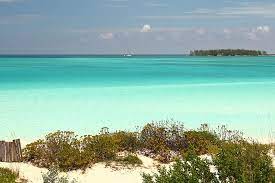LLamil Ruiz González
As part of the recovery and conservation of the coastal dunes in the northern keys of Ciego de Ávila, specialists from the Ciego de Ávila Ministry of Science, Technology and Environment have proceeded to extract invasive plants and replace them with native ones that had been previously displaced.
This was confirmed by Danae Rodríguez Ramos, a researcher at the Center for Environmental Engineering and Biodiversity, who explained that among the local plants that have multiplied artificially, the coastal vine, the coastal mate and the caleta grape stand out, the latter in sectors conducive to their development.
In the case of the beach stew, despite being an autochthonous plant and favorable for the constitution of the dune, the situation is different given its inconvenience for tourism development, for which reason it has been eliminated as far as possible, using hermetically sealed bags. closed with the aim of avoiding the dispersal of its numerous seeds.
There is no doubt, then, that although there is still a long way to go, tourism in the Jardines del Rey archipelago advances hand in hand with science in order to protect the environment without neglecting tourism development on which, to a large extent, the future of our country.

